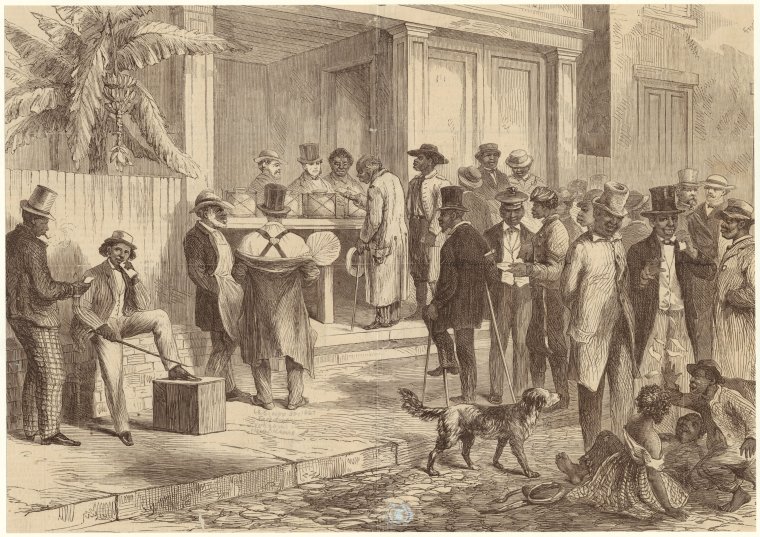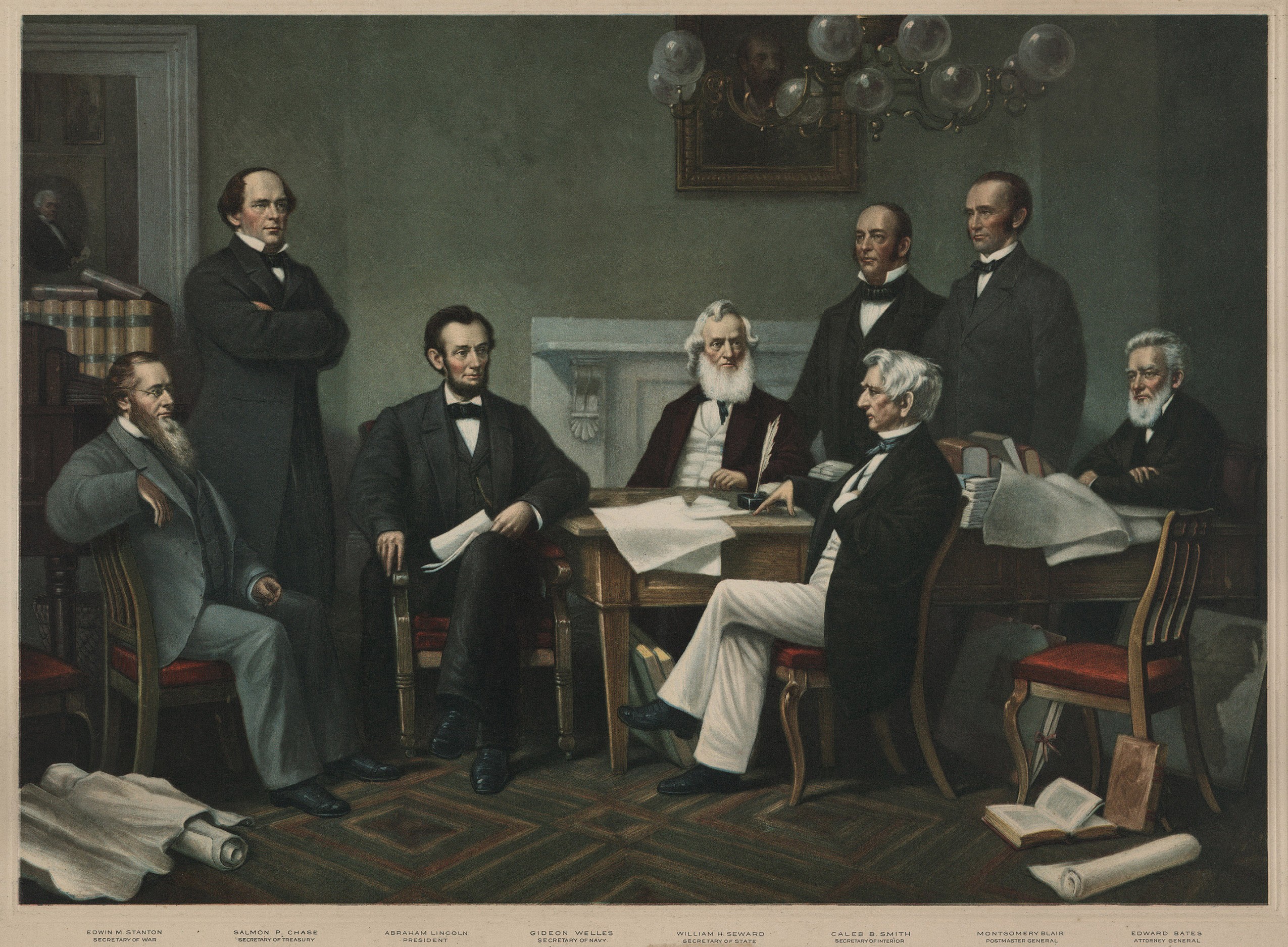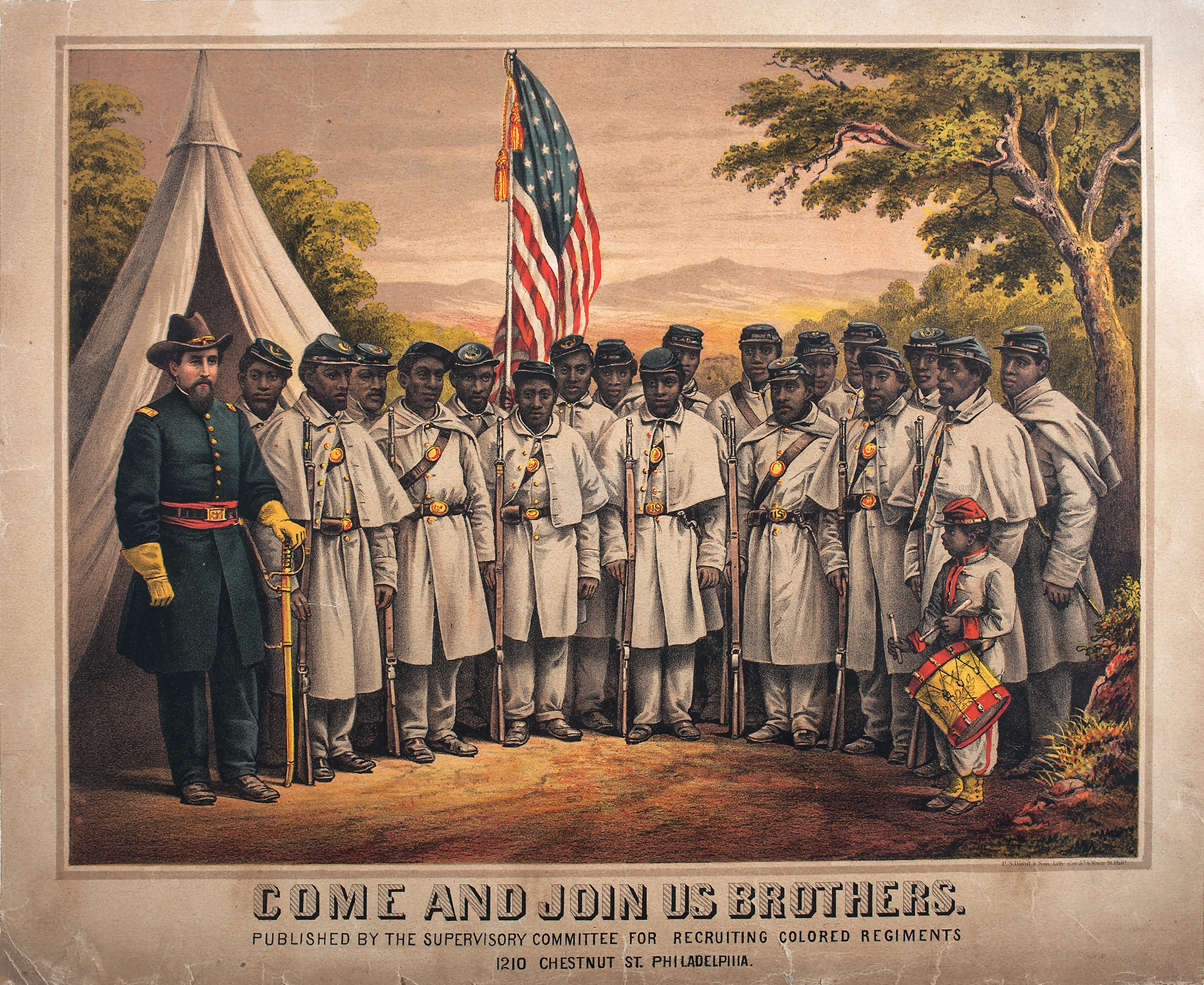Reconstruction was the name for a set of official policies to settle the results of the American Civil War, which became a war of liberation, a revolutionary war. It is worth noting that Winston Churchill himself, in his history of the world, published after World War I, observed that the uncompensated and immediate emancipation of 4 million human chattels during the American Civil War was the most revolutionary act in modern history, prior to the Bolshevik Revolution.
The Reconstruction Era and the unfinished American Revolution
Professor of History
- The goal of Radical Reconstruction, which began in 1866, was to make the formerly enslaved people full and equal citizens protected by law and fully participating in the political system as a biracial democracy.
- The 13th, 14th and 15th Amendments – which abolished involuntary servitude on the basis of race or colour, gave citizenship to all born on US soil and forbade denying suffrage on the basis of race, colour or previous condition of servitude, respectively – have been the most important changes to the Constitution since it was originally enacted.
- After Democrats used paramilitary terror to win elections across the South in the mid 1870s, including two massacres of black state militia units, the Republican Party cut a deal so that they could get the presidency. That is the official end of Reconstruction.
A definition of Reconstruction

"Freedmen Voting in New Orleans" 1867 engraving showing African Americans who had been enslaved but a couple years later participating in election. 1867. Wikimedia Commons. Public Domain.
Settling fundamental questions
Reconstruction was intended to settle fundamental questions. First, all of these states from Virginia through Texas had rebelled. They were treasonous. They had created an entire government and a large army full of people who were, by every legal and constitutional understanding, traitors.
What was to be done with those states and with their leaders, the officer corps of the Confederate Army? How would they be readmitted to the Union? Nobody thought they could just remain occupied territory for decades to come. That’s quite unusual in human history – so, how to readmit those states to the Union and go back to the normal functioning of the US political system?
Underlying that question was something deeper and more fundamental; 4 million enslaved beings were now free. These were not passive objects of Lincoln’s charity – huge numbers of them had already claimed their freedom by running away whenever the Union Army came close. Thousands of black people simply took to the roads whenever they heard the Union Army was nearby, asking, ‘Can we join?’, ‘Can we dig trenches?’ They were ready for freedom. What would happen to them? Would they be forced into some kind of bound labour? Not enslaved, but controlled. Would they become citizens, and the men among them, voters?
These were the core questions of Reconstruction – a set of policies that, once the war was over or even before, began to be implemented as the Union Army carved its way into the South, officially ending in early 1877.
The “unfinished revolution”
The Republican Party, the only revolutionary political party in US history, controlled Congress under President Lincoln and after his assassination by a Southern terrorist in 1865. One wing of the Republicans called themselves Radicals, and radical they were. That wing, which was, for much of this period, ascendant, believed in absolute, non-racial citizenship for the enslaved people.
The goal of Radical Reconstruction, which began in 1866, was to make the freedmen – the formerly enslaved people – full and equal citizens protected by law and fully participating in the political system as a biracial democracy. So, that’s the “unfinished revolution”: to make the US a completely multiracial, equal democracy. We haven’t gotten there yet, not when there is massive legal disenfranchisement targeted at people of colour as well as others.
The most important changes in the Constitution

Photo by Everett Collection
The best way of getting at what Reconstruction attempted to do, and how it succeeded, is to talk about the three Reconstruction amendments to the US Constitution: the 13th, 14th and 15th Amendments. There is very little disagreement that these have been the most important changes to the Constitution since it was originally enacted.
The 13th Amendment abolished involuntary servitude on the basis of race or colour, with the exception of punishment for crime. It was passed and finally ratified in the fall of 1865. It needed to be passed – it was not clear that the Emancipation Proclamation would be sufficient, because it was a wartime measure. In fact, Steven Spielberg’s movie “Lincoln” is an excellent account of Lincoln pushing the 13th Amendment through Congress in early 1865, before he is assassinated. That was crucially important to absolutely bar formal chattel slavery in the United States.
Next, the Radical Republicans passed an extraordinarily consequential amendment, the 14th Amendment, ratified in 1868, which said directly and clearly that everyone born on the soil of the United States is a citizen of the United States and entitled to equal and due process under the laws.
Not only did it create this enormously capacious and equal citizenship, which applied to all of the former enslaved people, it also mandated that your rights could not be violated by the states, which was a completely new concept – that citizenship applied at every level. As a principle, it was very revolutionary.
Finally, the 15th Amendment, passed in 1870, said that you could not deny suffrage to someone on the basis of race, colour or previous condition of servitude.Taken together, these constitutional changes set the terms for an egalitarian, biracial democracy everywhere in the United States. For those few years of Radical Reconstruction, they were enforced, and it began to grow up in the South. Obviously, the women and children weren’t voting, but a very large group of black men were voting. The best estimates are that about 95% of them showed up and voted.
The collapse of radical reconstruction
Radical Reconstruction was crushed in a violent counter-revolution, and the results of that violent counter-revolution lasted into the 1960s. That’s what the Voting Rights Act is really about. The Republican Party was the “Party of Lincoln”, as they called it then. The Democratic Party, since its modern founding in the 1820s, had been the party of slavery and what were called “northern men with southern principles” – pro-slavery northern men. It was a very powerful party and it remained the pro-slavery party, and then the party of white supremacy, long after the Civil War.
In the South after the Civil War, the Democratic Party was the party of the former slaveholders and all the white people who wished they’d owned slaves, because most white people didn’t own slaves, and they were the majority of white people in every state. There were always some white Republicans, but the majority of white people were Democrats and did not accept the results of the Civil War. They’d been militarily defeated, but they did not accept their defeat. They were committed to regaining power and to subjugating black people, and between 1874 and 1877, using paramilitary violence, they succeeded, state after state. When I say paramilitary violence, most Americans think of the Ku Klux Klan, but there were dozens of different groups under different names. The Democratic Party had a paramilitary wing. They killed, whipped and drove out Republicans, county by county.

Come and Join Us Brothers, by the Supervisory Committee For Recruiting Colored Regiments. Wikimedia Commons. Public Domain.
The two events that really symbolise the end of Reconstruction are two large scale massacres of black state militia units in 1873 and then 1876. The state militias are what we today call the National Guard; they are part of the military system of the United States. Louisiana and South Carolina had state governments with large-scale black participation, and they had black state militia units wearing uniforms, trained and equipped as part of the military system of the US.
In both cases, armed white gangs attacked these militia units, and they eventually surrendered. After the black militiamen surrendered, they were butchered. These were massacres. The federal government tried to act, but not effectively. They couldn’t get juries to convict and they weren’t willing to use real force to put down this kind of paramilitary violence. So, by the election of 1876, the Democrats were sweeping the board, intimidating black voters, visiting them the night before the election, standing around the polls, heavily armed. The Democratic Party was full of extremely experienced Confederate Army veterans. These were people you had to be very frightened of; they had fought very hard and they were quite prepared to retake power with weapons in hand.
In 1877, the Republican Party cuts a deal so that they can get the presidency in a very contested presidential election. The deal is that they will withdraw the last federal troops from the South, a black unit occupying the South Carolina State House. That is the official end of Reconstruction.
A shameful story for U.S. historians
As history became an academic discipline at the end of the 19th century, a school of historians grew up teaching that slavery was a generally beneficial and decent system in which the enslaved people were docile, didn’t have to work that hard and were happy; that they didn’t care; that they weren’t rebellious. This is a completely racist depiction, but that was the dominant explanation at every level of the US education system for white people from the late 19th century into the 1950s, at least. This is utterly and completely untrue, but this was taught as history. It’s a profoundly embarrassing and shameful story for US historians.
As a correlative of that – that the slaves were happy – another school of historians taught that the Civil War was a conflict between the states for domination, and was not about ending slavery. This was so-called Progressive history, that the northern industrial bourgeoisie wanted to control the US in its own interests, so it subjugated the agrarian class of the South, and ending slavery was just an excuse for that conflict between regional elites. This was being taught into my lifetime as really serious history, in which black people were just passive objects, even invisible. In that larger story, Reconstruction was almost completely ignored, as an afterthought.
Discover more about
Reconstruction
Foner, E. (2014). Reconstruction: America's Unfinished Revolution, 1863-1877 (updated edition). Harper Collins Publishers.
Foner, E. (2019). The Second Founding: How the Civil War and Reconstruction Remade the Constitution. W. W. Norton.